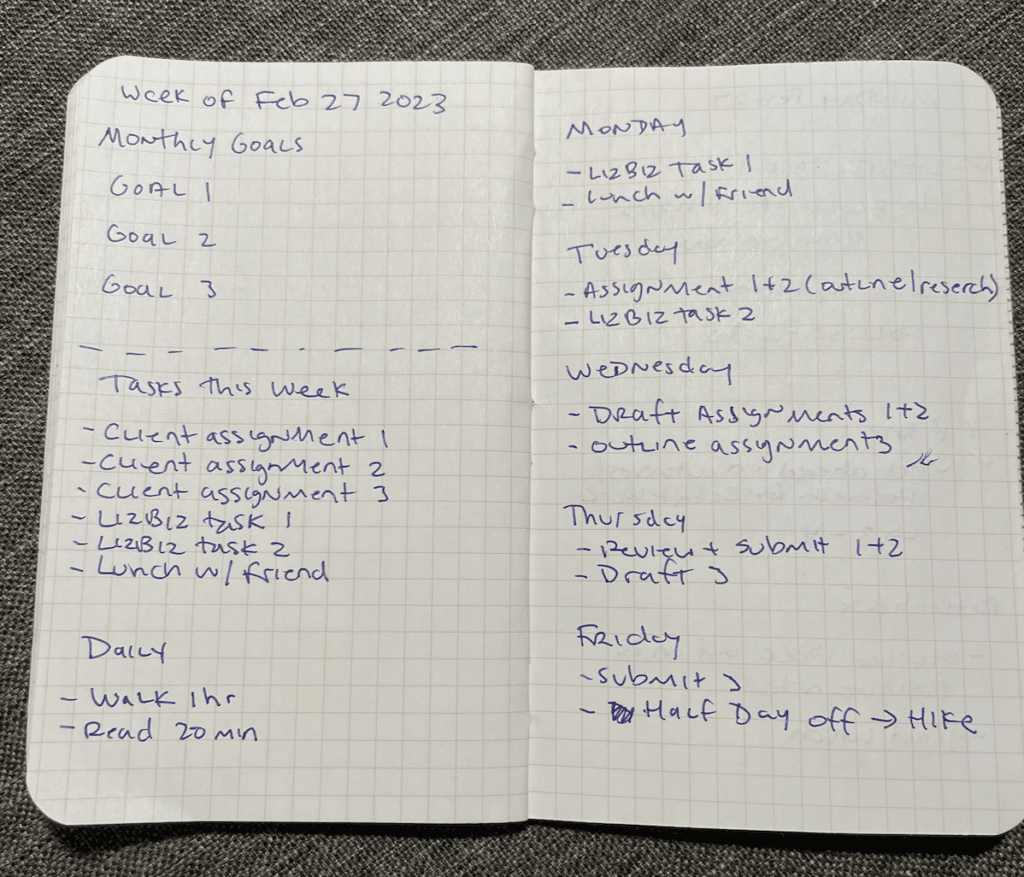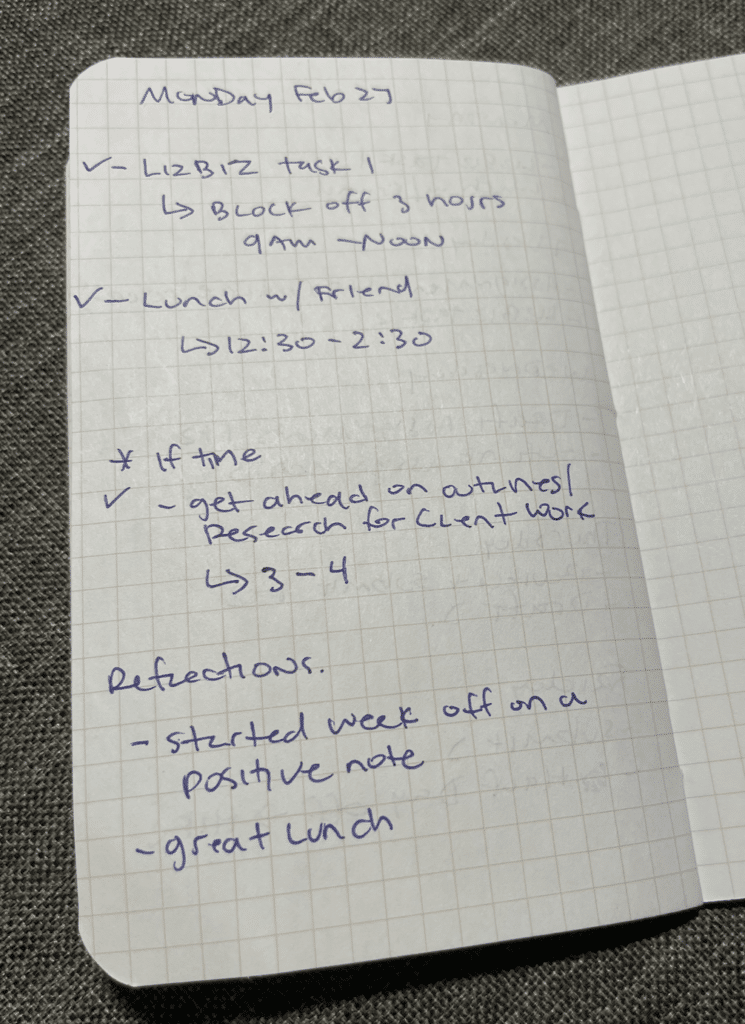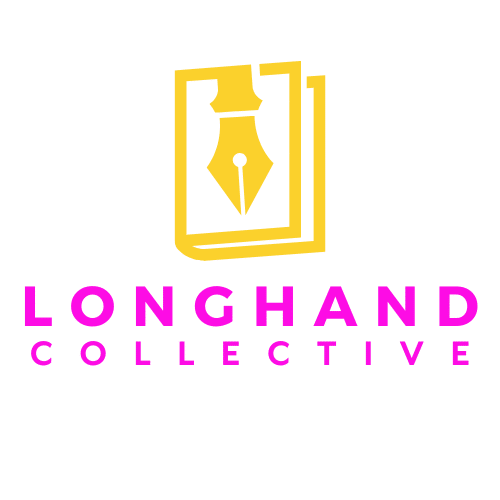Welcome to oppositeville. Here, we don’t talk about digital productivity tools (though I do love Notion). Nope, we’re going for analog productivity, the anti-tech stack, if you will.
An anti-tech stack is a set of tools and techniques that use pen and paper instead of online programs and apps. It may sound old-fashioned, but it can actually help you get more done.
Which is maybe one reason why I’ve found myself gravitating to ways to boost my productivity the old-fashioned way, without needing a device.
So, I want to share some of my tips for analog productivity and how to get started.
Tools of the trade
Get ready for this list.
You will need:
Yup, that’s it.
Seriously.

Easy to start and easy to carry…like to your local bar.
Before you rush out to your local fancy paper shop, look around your home. You probably have all the tools you need to get started right there.
You do not need:
- A fancy notebook
- Lots of different colored felt tip pens
- Washy tape of any sort
- Stickers
- Gold leaf dusting
- Artistic skill or talent of any sort
- Good penmanship
When I first started digging into analog productivity, I got swept up in the bullet journal craze. I found a bunch of people on Instagram and YouTube making incredibly intricate, beautiful journals monitoring every sector of their lives.
AmandaRachLee is one of my favorite planner designers on YouTube. She makes awesome stuff every month. Honestly, it’s sort of AMSR for me just watching.
But I can’t keep up with all that.
If you want to check out someone with a more minimalist approach to bullet journaling, I’d recommend Matt Ragland’s channel.
I let the people who thrive off that part of their process vibe with it, and I keep mine decidedly simple and probably boring. I say this to not let this get you down if going all out on making a whole bullet journal spread is not something you want to do or it doesn’t come naturally.
The most important part is finding the systems and methods that work for you and what you’ll stick with over the long term.
One pen and one notebook (design-free) are all you need.
The benefits of analog productivity
I think anti-tech stacks are making a comeback.
People love reading hardcover books, walks in nature are cool, and actually speaking on the phone is hot again.
What’s old becomes new.
And in a world where we spend so much energy focused on our screens, building some anti-tech productivity stacks has real benefits for your time management.
- It helps you slow down and focus. Writing by hand forces you to think deeply and carefully about what you want to say or do. You can’t just copy and paste or delete something with a click. You have to be intentional and deliberate with what you put on paper.
- It boosts your memory. Studies have shown that writing by hand improves your retention and comprehension of information. When you write something down, you engage more parts of your brain than when you type and have better recall later.
- It sparks your creativity. Analog productivity doesn’t have to be boring. Add doodles to your to-do list, write with a cool pen that makes you smile, learn calligraphy and use it here. Writing by hand allows you to express yourself more freely and authentically than typing. Try it.
- It reduces your exposure to blue light. Spending too much time in front of screens can harm your eyesight, sleep quality, mood, and overall health. Using pen and paper can help you spend a little more time away daily.
Download this cheatsheet and get expert solutions for the 13 most common pen problems.
Get The FREE CheatsheetTips for getting started
Grab a pen and piece of paper (or notebook, sticky notes, index cards, etc.). That’s all you need to get started.
Now it’s time to start.
Here are a few tips to help:
- Start simple. I work on two lists: my weekly planning and my daily to-do. That’s it. I don’t worry about setting it up or anything fancy. I only want to focus on what’s coming up in the week ahead of me.
- Make a planning day. I set aside about 20-30 minutes on Sunday to review my upcoming schedule. Once I’m done, I know everything I need to do for the week and the days I plan to do them.
- Make a daily to-do list. At the start of every day, I set up my daily to-do (some do this the night before). I write down my goals for the week and the tasks for that day. That’s it.
- Be ok with trial and error. No one nails their productivity process the first time. Give yourself some breathing room to figure out what works for you until it feels as automatic as brushing your teeth every morning.
A look at my analog productivity setup
For my setup, I love using Field Notes.

I think since all the covers are so cool, that’s my design element, leaving me to just get to it inside the pages.
I like to work with a notebook a month (but you could squeeze two months into one notebook if you wanted).
On the main page, I list out my goals for the month. I have my week at a glance and then each day.
Then as I go through my weekly planning, I re-write my goals again. That repetition, like Bart Simpson at the chalkboard, helps reinforce what I want to accomplish.

Then, I use a page a day.
I write down the 2-3 tasks I need to tackle that day and check them off as I go.

Sometimes, I’ll add backup tasks for days I feel very productive. On other days, I’ll note how I felt or try to list a few things that made me happy or grateful.
That’s it.
And the next Sunday, I repeat the process.
At the end of the month, I’ll make notes reflecting on what worked and what didn’t, and then I’ll brainstorm some tasks to focus on next month.
If you’ve been trying to find ways to give analog productivity a spin, try this method. And let me know how it goes.
Liz
Hey, I'm Liz. I'm the founder of this thing. Pen-obsessed and a notebook nut, I love writing by hand. So I'm gonna talk about it on a computer.Download this cheatsheet and get expert solutions for the 13 most common pen problems.
Get The FREE Cheatsheet